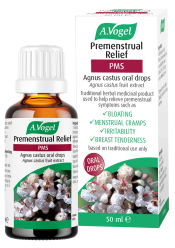Here are some ideas of New Year's Resolutions for your period: Drink herbal teas; try a Mediterranean diet; eat flaxseeds; do "Dry January"; quit sugar; get a menstrual cup; exercise; cultivate mindfulness; reduce or eliminate dairy products and coffee if you suffer from cramps; and opt for warm instead of cold foods.
And just to be clear, these are simply ideas! You definitely do not need to do them all! I highly recommend keeping a menstrual journal if you are taking on any new habits to support your menstrual cycle, so you can see what symptoms you experience and how you feel throughout your cycle. Simply note which day of your cycle you are on, with day one being the day you start to bleed, and then note your mood, energy and any symptoms. This means you can look back and notice how your resolutions may be helping in the weeks and months to come.
11 New Year’s Resolutions for your period
1. Drink herbal teas
Let's start with an easy one! Herbal teas are a delicious and comforting addition to your diet. Some that are particularly helpful are:
- Ginger – great for nausea, bloating and any digestive pain or period pain.
- Peppermint – brilliant for bloating and gas, and headaches.
- Chamomile – anti-inflammatory, prebiotic, calming for the digestive tract and the nervous system, good for gas and bloating, and helps to balance hormones.
- Cinnamon – a delicious blood sugar-balancing spice, which can also help heavy periods.
- Red raspberry leaf – a beautiful uterine tonic which you can drink during your period, or all month long to nourish your womb.
2. Eat a Mediterranean Diet
Following a Mediterranean diet has many health benefits, but it is the one diet that consistently shows benefits for women and their menstrual cycles.(1) Eating lots of plants, good fats like olive oil and avocados, protein from plants, fish and a small amount of meat provides good building blocks for your hormones.
Eating a wholefood, mostly unprocessed diet is one of the best things you can do for your health in general. Getting good levels of nutrition, including good fats, is really important for your hormones. Reducing your intake of processed foods, high in salt and sugar, can also help to reduce symptoms of PMS and dysmenorrhea, aka painful periods.
A diet high in fibre is additionally associated with a healthy menstrual cycle. A study in the American Journal of Clinical Nutrition found that higher levels of fibre in the diet were linked to lower levels of oestrogen, thus reducing PMS. (2)
The best way to get enough fibre is to follow step number one – eat real food! Whole grains, vegetables and nuts and seeds are all great sources of fibre.
3. Add 2 tbsp of flaxseed to your diet
Also known as linseeds, these incredible seeds are high in omega 3s, a rich source of hormone-balancing phytoestrogens and a bulking fibre high in mucilage which is great for digestion. A small sprinkling on your porridge isn't going to cut it though - go for 2 tablespoons daily to get the full benefit of these wonderful seeds.
4. Take part in “dry January”
This one could be particularly helpful if you had a boozy December! You may have done "Dry January" before, it's becoming increasingly popular, but for this resolution in particular I would suggest really taking note of how the month off alcohol affects your menstrual cycle. Alcohol consumption has been linked to more severe PMS, so if you are taking the month off alcohol, why not also keep a menstrual journal. (3) Track the day of your cycle and how you feel each day. If you find that you have less PMS when you're not drinking alcohol then you can decide whether you reintroduce it again in February!
5. Quit sugar (for a few weeks at least to see how you feel!)
There is also scientific research linking sugar consumption to PMS. (4) When I talk about sugar, it's not just the sugar in your tea or on your cereal, or in the obvious chocolate bars or biscuits. There is so much sugar hidden in the ingredients of things like yoghurt, pasta sauces and baked beans. Refined flour, and white pasta and white bread can also be problematic for some people. My best advice is to eat whole grains and lots of veggies, and to always read the label on packaged food and look out for hidden sugars!
Fruit is my go-to sweet alternative to refined sugar. Berries are nature's candy in my opinion, and are lower in natural sugar than many other fruits, making them a great choice while you have an infection especially. While all fruit does contain natural sugars, they are also high in fibre; so, go for whole fruits rather than fruit juice to make sure you get the benefits of the fibre!
6. Get a menstrual cup
This is an easy resolution, to reduce your waste and your impact on the planet, but also to potentially reduce your exposure to hormone-disrupting chemicals that are found in many tampons and pads. Many are made from cotton which has been sprayed with large amounts of glyphosate, or Roundup®, a herbicide which is classed as an endocrine-disrupting chemical. They also commonly contain carbon disulfide, which has been scientifically proven to contribute to menstrual problems. (5)
If you're not keen on menstrual cups, there are also reusable pads and period knickers available now. Just make sure to go for organic ones. This is an easy swap, and if you invest in a reusable product, it will likely be much more cost-effective in the long run too! Many women find that once they transition to less toxic period products, their periods become less heavy and less painful.
To learn more about this topic check out my blog about endocrine disruptors in everyday items here: 7 Everyday Items That Might Be Making Your Period Worse
7. Commit to moving your body every day
You don't have to join a gym if you know you're going to stop going after a couple of weeks. Find some movement that you enjoy! I love dancing and practicing yoga and I love how my body feels after I do Pilates. I also love walking in nature and swimming outdoors. But that's definitely not for everyone! So, find what you love and what works for you!
I try to get out for a walk every day, but if I don't I do some squats while the kettle boils, or run up and down the stairs, or lately I'm reviving my love of hula hooping (my daughter got one for Christmas!) Just move your body! Little and often is great, but commit to moving your body every day!
When we get our bodies moving, it releases endorphins and helps give us that feel-good factor. Research has found that both yoga and aerobic exercise help PMS. (6) Another study found that 45 to 60 minutes of exercise, when done three times a week or more, significantly reduces period pain, regardless of the intensity of the exercise. (7)
8. Meditate
Mindfulness, or any kind of meditation, is a game changer and is one of the top naturopathic recommendations I give to my clients, regardless of what health issue they might be dealing with. There is research too, showing that women with a regular mindfulness practice experienced much less PMS than those who did not practice mindfulness. (8) There are so many great apps to try now, which can help you get started if you are new to meditation and mindfulness. Some that I recommend are Insight Timer, Calm, Ten Percent Happier, Headspace and Buddhify.
Tapping meditation (also known as emotional freedom technique) is another form of meditation which was found to reduce PMS and period pain. You can learn more about tapping in my blog "EFT Tapping for PMS"
9. Reduce or eliminate dairy products if you suffer from cramps
Dairy products can cause a lot of inflammation in our bodies, because our bodies weren't designed to process milk that is made for the offspring of another animal. This can make dairy products hard to digest for a lot of us, and can increase inflammation and pain. A1 Casein is a protein in milk that many of us convert into an inflammatory peptide called casomorphine which, in turn, sets off a huge inflammatory response that can lead to more intense pain during menstruation.
There are loads of wonderful dairy-free alternatives available today. Just make sure to check the ingredients and opt for the ones without added sugar. There's no point swapping one inflammatory food for another. Many of the dairy-free options available are full of sugar, so make sure to read the ingredients first! In fact, reading the ingredients label on your food could be another great resolution to adopt!
10. Eat warm foods
In Traditional Chinese Medicine (TCM), cold food contributes to stagnation and pain. TCM practitioners recommend avoiding cold foods in general, but particularly in the colder winter months, when you are menstruating, and if you are suffering from any kind of pain. If you love salads and smoothies, try cutting them out when you have your period and see if it helps! Go for soups and herbal teas instead of smoothies; warm stews and comforting cooked foods instead of salads. If eating leftovers, warm them up first!
11. Ditch the coffee
Coffee, and caffeine in general, can cause your blood vessels to narrow, known as vasoconstriction. This can make your period cramps worse. The spike and drop in energy levels can also make you feel worse overall too.
Remember that coffee is an addictive substance, so stopping cold turkey can cause some unpleasant withdrawal symptoms. It can be best to start by reducing your coffee intake and, if you are cutting it out completely, it is probably best to do mid-cycle when you have more energy, rather than when you have your period or when you might be dealing with PMS in the premenstrual days.
Coffee alternatives like chicory coffee, dandelion coffee, or A.Vogel's Bambu are great drinks to try. Chamomile tea contains anti-inflammatory properties that might help ease your cramps too!








